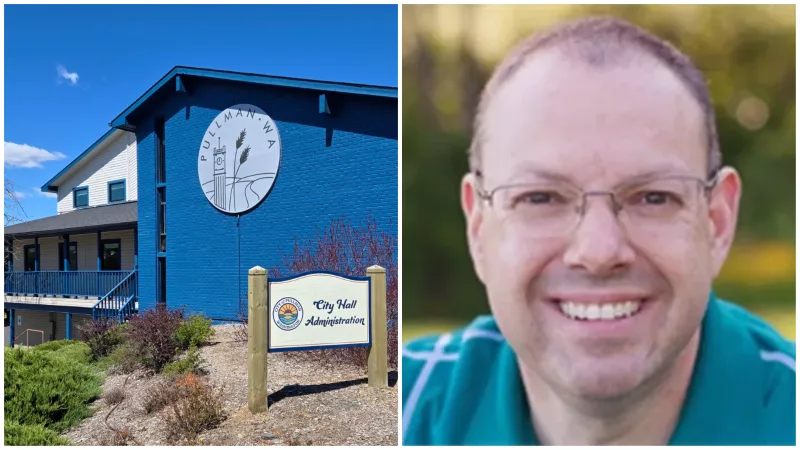PULLMAN, Wash. — A shipping container that can test passive cooling systems could help researchers and builders find carbon-free ways to keep people cool in extreme temperatures.
Washington State University researchers created the 60-square-foot chamber to test passive systems that use wind towers along with water evaporation instead of electricity to cool spaces.
Finding cooling methods that don’t require putting more greenhouse gases into the air is crucial to helping a growing population adapt to climate change, said Omar Al-Hassawi lead author of the study in the journal Energies.
“Cooling is increasingly in demand in buildings, especially as the climate gets hotter,” said Al-Hassawi, assistant professor in WSU’s School of Design and Construction. “There might be inclusion of mechanical systems, but how can we cool buildings to begin with — before relying on the mechanical systems?”
The test chamber the researchers developed is solar powered with battery storage and is completely independent of grid power. It can be heated to a temperature range between 125 and 130 degrees Fahrenheit year-round to test cooling innovations, measuring the temperature, humidity and air velocity within and around a cooling system. The researchers calibrated the chamber using the results of a full-scale experiment that was conducted on a passive, downdraft cooling system tested under the hot dry conditions of Phoenix, Arizona.
“We can simulate extreme conditions,” Al-Hassawi said. “With smaller scale models, we can also do much quicker tests and get results sooner than having to wait on large-scale prototype construction.”
Buildings consume about 60% of the world’s electricity with nearly 20% of that going to keep them cool, according to Al-Hassawi. In the U.S., almost 90% of residential homes and apartments use mechanical air conditioners.
As people worldwide grapple with global warming, energy demand for mechanical air conditioning is expected to double by the year 2050. Powering air conditioning units requires electricity, which is often generated by fossil fuels, increasing carbon emissions and contributing to worsening global warming.
“There’s a lot of new construction with the rising global population that is going to happen in the coming years, and a lot of it is going to be in the developing world,” Al-Hassawi said. “So if we build like we’ve been building and continue to rely on mechanical systems to meet cooling demands, that’s going to be an issue. There’s going to be a lot more air conditioning that’s needed, especially with the population rise in the hotter regions of the world.”
Passive cooling systems that don’t require electricity have been used for centuries by people in hot places, going back to about 2500 BC in ancient Egypt. One cooling strategy involves capturing breezes from a tower. With a layer of moisture at the top of the tower, evaporation cools the air, which then becomes heavier and sinks by gravity into a living space below. The moisture can be provided by wetted pads, shower heads or misting nozzles. Typically, mechanical fans are only required as a backup.
Although such systems are occasionally used in hot places like Phoenix, Arizona, people and building professionals are often not familiar with passive cooling techniques or misunderstand them. A passive cooling strategy could make use of old smokestacks in older buildings, for instance, as a cooling tower and could be applicable both for existing or new construction, said Al-Hassawi.
“It’s an older technology, but there’s been an attempt to innovate and use a mix of new and existing technologies to improve performance and the cooling capacity of these systems,” he said.
Wider adoption of such passive cooling systems could lower energy demand, but trying to research and test passive cooling systems takes considerable investment and training.
“That’s why research like this would really help,” he said. “How can we address building design, revive some of these more ancient strategies, and include them in contemporary building construction? The test chamber becomes a platform to do this.”
Students have designed and built some prototype cooling systems which utilize the passive downdraft cooling system. These will be tested starting next semester. Al-Hassawi hopes that industry partners might also be interested in testing passive system designs in the chamber over the coming academic year.




